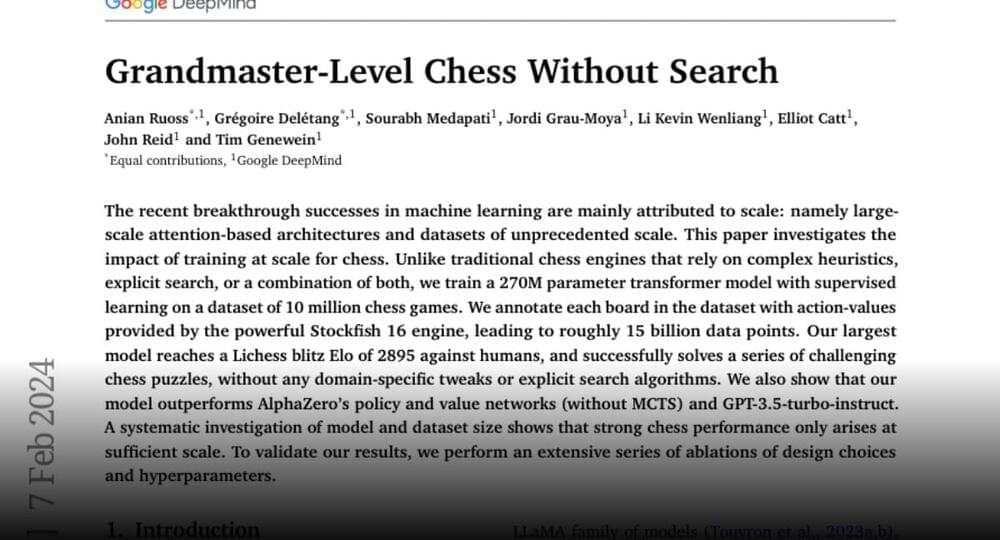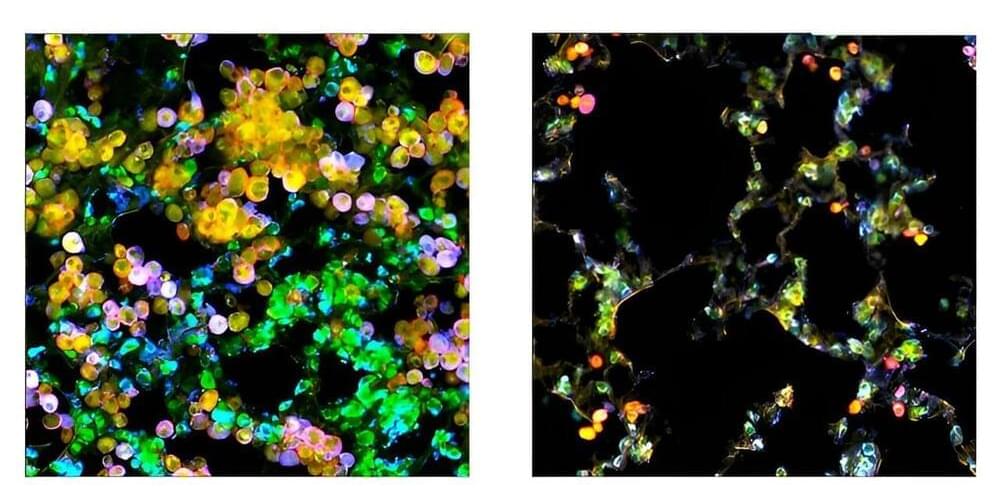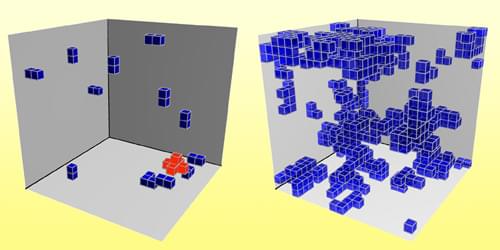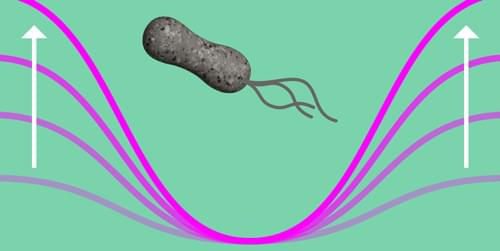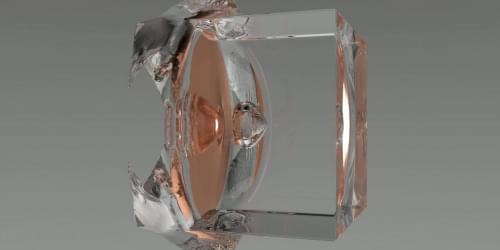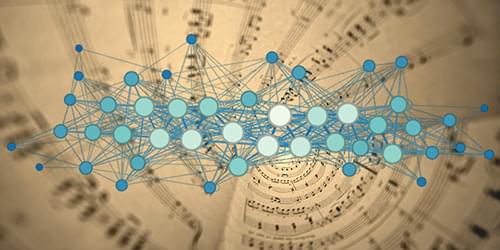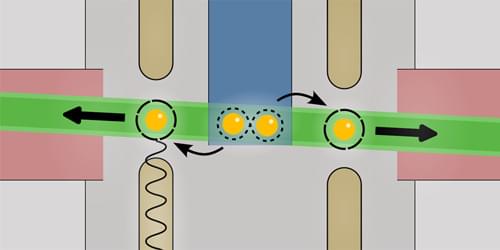Page 1386
Feb 8, 2024
SpaceX launches billion-dollar environmental research satellite for NASA
Posted by Genevieve Klien in categories: biological, climatology, education, satellites, sustainability

SpaceX launched an environmental research satellite for NASA early Thursday, a nearly $1 billion spacecraft that survived multiple cancellation threats and is now poised to shed new light on climate change and the complex interplay of heat-trapping carbon, aerosols and sea life on global scales.
The Plankton, Aerosol, Cloud, ocean Ecosystem mission — PACE — “will dramatically advance our understanding of the relationship between aerosols and clouds, and the global energy balance,” said Karen St. Germain, director of NASA’s Earth sciences division. “This is one of the biggest sources of uncertainty in our ability to model the climate.”
Continue reading “SpaceX launches billion-dollar environmental research satellite for NASA” »
Feb 8, 2024
How lung cancer hijacks immune cell metabolism to fuel its own growth
Posted by Shubham Ghosh Roy in category: biotech/medical
Lung adenocarcinoma is the most common lung cancer and the cause of most cancer-related deaths in the United States. There are several ways lung adenocarcinoma can arise, one of which is a mutation in a protein called EGFR (epidermal growth factor receptor). Non-mutated EGFR helps cells grow in response to injury, but mutated EGFR promotes out-of-control growth that can turn into cancer.
Modern immunotherapies don’t work against EGFR-driven lung adenocarcinoma, and while some drugs exist to treat the cancer, patients typically develop a resistance to them within just a few years. This gap in the treatment tool chest inspired Salk Institute researchers to probe for weak spots in the cancer’s growth pathway.
The team discovered that EGFR-driven lung adenocarcinoma hijacks a specialized population of lung-resident immune cells called macrophages, which are designed to dispose of diseased and damaged cells, as well as maintain a delicate balance of protective lipids (fats) around lung alveoli, which are essential for breathing.
Feb 8, 2024
Lattice Model Captures Dynamics of the Glass Transition
Posted by Saúl Morales Rodriguéz in categories: materials, particle physics
Scientists have yet to obtain a complete microscopic understanding of how a supercooled liquid behaves as it turns into a glass. Different theories can capture different aspects of the spatial and temporal dynamics of this process, but the assumptions behind these theories are, in some cases, mutually exclusive. Now Yoshihiko Nishikawa at Tohoku University, Japan, and Ludovic Berthier at the University of Montpellier, France, reconcile two competing descriptions of this glass-transition behavior using a recently developed lattice model [1].
A prominent glass-transition theory known as random first-order transition theory holds that a cooling glass-forming liquid adopts a mosaic-like static structure with finite-range order. In this framework, so-called dynamic fluctuations—reorganizations of a material’s particles—occur when boundaries between mosaic “tiles” collectively rearrange. These fluctuations are fundamentally tied to static, region-to-region variations in a material’s structure. A competing theory known as dynamic-facilitation theory contains no assumptions about the system’s static structure or region-to-region variations. This theory postulates that dynamic fluctuations occur via local, small-scale particle rearrangements that trigger a reorganizational chain reaction that then propagates through the material.
For their study, Nishikawa and Berthier used a different theory to probe the glass transition of a supercooled liquid. Their three-dimensional lattice theory exhibits mosaic-like structural variations that are consistent with those from random first-order transition theory. However, the researchers found that the model’s predictions for the dynamic fluctuations more closely resemble those of the dynamic-facilitation framework. Nishikawa says that no current experiments can directly confirm the occurrence of these behaviors in real glass-forming materials. But he hopes to use the three-dimensional lattice model to reproduce some recently observed indirect experimental data.
Feb 8, 2024
Smooth Control of Active Matter
Posted by Saúl Morales Rodriguéz in categories: biotech/medical, materials
A theoretical study finds that the most energy-efficient way to control an active-matter system is to drive it at finite speed—unlike passive-matter systems.
The control of active matter, a class of systems in which each constituent constantly converts energy into directed motion, holds great potential for applications ranging from the targeted delivery of drugs to the creation of smart materials. Using an active-matter system to achieve a particular goal requires that one can efficiently drive it from one state to another. However, active matter’s intrinsic nonequilibrium condition presents a major challenge for theoretical treatments, meaning the most efficient way of driving a system is often difficult to predict. Now Luke Davis at the University of Luxembourg and colleagues have introduced a general framework to determine thermodynamically optimal protocols to drive active systems between different states in a way that minimizes the associated heat dissipation [1].
Feb 8, 2024
Inertial-Confinement Fusion without Lasers
Posted by Saúl Morales Rodriguéz in category: innovation
The recent breakthroughs in laser-based fusion have given a boost to a number of start-up companies—one of which has plans to replace the lasers with a high-speed projectile.
Feb 8, 2024
Measuring the Information Delivered by Music
Posted by Saúl Morales Rodriguéz in categories: biotech/medical, media & arts
A network-theory model, tested on the work of Johann Sebastian Bach, offers tools for quantifying the amount of information delivered to a listener by a musical piece.
Great pieces of music transport the audience on emotional journeys and tell stories through their melodies, harmonies, and rhythms. But can the information contained in a piece, as well as the piece’s effectiveness at communicating it, be quantified? Researchers at the University of Pennsylvania have developed a framework, based on network theory, for carrying out these quantitative assessments. Analyzing a large body of work by Johan Sebastian Bach, they show that the framework could be used to categorize different kinds of compositions on the basis of their information content [1]. The analysis also allowed them to pinpoint certain features in music compositions that facilitate the communication of information to listeners. The researchers say that the framework could lead to new tools for the quantitative analysis of music and other forms of art.
To tackle complex systems such as musical pieces, the team turned to network theory—which offers powerful tools to understand the behavior of discrete, interconnected units, such as individuals during a pandemic or nodes in an electrical power grid. Researchers have previously attempted to analyze the connections between musical notes using network-theory tools. Most of these studies, however, ignore an important aspect of communication: the flawed nature of perception. “Humans are imperfect learners,” says Suman Kulkarni, who led the study. The model developed by the team incorporated this aspect through the description of a fuzzy process through which a listener derives an “inferred” network of notes from the “true” network of the original piece.
A proposed device can repeatedly grab pairs of electrons from a superconductor and separate them while preserving their entangled state.
Feb 8, 2024
Unlocking Quantum Superconductivity Mysteries With Ultracold Fermions
Posted by Saúl Morales Rodriguéz in categories: particle physics, quantum physics
Researchers have made a landmark discovery in quantum physics by observing and quantitatively characterizing the many-body pairing pseudogap in unitary Fermi gases, a topic of debate for nearly two decades. This finding not only resolves long-standing questions about the nature of the pseudogap in these gases but also suggests a potential link to the pseudogap observed in high-temperature superconductors. Credit: SciTechDaily.com.
Researchers have conclusively observed the many-body pairing pseudogap in unitary Fermi gases, advancing our understanding of superconductivity mechanisms.
A research team led by Professors Jianwei Pan, Xingcan Yao, and Yu’ao Chen from the University of Science and Technology of China (USTC) of the Chinese Academy of Sciences, has for the first time observed and quantitatively characterized the many-body pairing pseudogap in unitary Fermi gases.
Feb 8, 2024
Asteroid Impact Near Berlin Reveals Rare Aubrite Treasures
Posted by Saúl Morales Rodriguéz in categories: asteroid/comet impacts, chemistry, existential risks
Jenniskens’ collaborators at the Museum für Naturkunde officially announced that the first examinations of one of these pieces with an electron beam microprobe prove the typical mineralogy and chemical composition of an achondrite of the aubrite type.
The official classification now aligns with what many suspected from merely looking at the images of the strange meteorites that fell near Berlin on January 21, 2024. They belong to a rare group called “aubrites.”
“They were devilishly difficult to find because, from a distance, they look like other rocks on Earth,” said SETI Institute meteor astronomer Dr. Peter Jenniskens. “Close up, not so much.”
